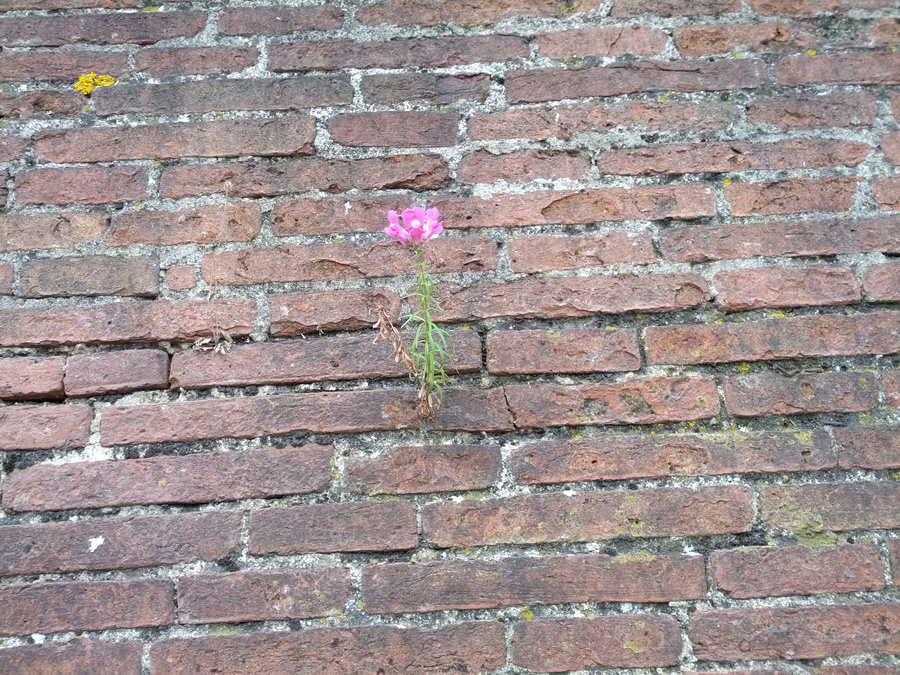Wallflower no more
« previous post | next post »
Yesterday afternoon at an ICASSP-2014 session on music transcription. Just as in the session on Diarization that I wrote about yesterday, most of the papers reported results on published data, and several also offered links to their code. Thus Ken O'Hanlon and Mark D. Plumbley, "Polyphonic Piano Transcription using Non-negative matrix factorisation and group sparsity", which ends with this note:
6. REPRODUCIBLE RESEARCH
This research benefits from the efforts of other researchers to share their code [5] and dataset [21]. The open availability of these resources is commendable, allowing other researchers to easily and accurately compare methods. The code used in the experiments described in this paper is available at http://code.soundsoftware.ac.uk/projects/gs bnmf/.
On the way back to the hotel, I passed this brave little flower growing out of the wall of the Fortezza da Basso:
There was a time, not long ago, when "reproducible research" was flowering here and there in a similarly inhospitable scientific landscape.

TheStrawMan said,
May 8, 2014 @ 6:22 am
Um. I don't follow
Rod Johnson said,
May 8, 2014 @ 9:15 am
…but now it's starting to take hold and flower more generally, see?
Ralph Hickok said,
May 8, 2014 @ 10:39 am
"Flower in the crannied wall … "
John Lawler said,
May 8, 2014 @ 11:49 am
It's the opposite reaction to the way Wordsworth's Peter Bell is described:
"A primrose by a river's brim
A yellow primrose was to him,
And it was nothing more."
valency said,
May 8, 2014 @ 7:43 pm
I remember in high school being told that the essence of scientific research is reproducibility. In university I discovered that the overwhelming majority of psychological studies, including a surprisingly large number of key studies, have been replicated precisely zero times.
Zizoz said,
May 9, 2014 @ 2:55 am
I was familiar with "wallflower" as a term for a shy or socially awkward person, so this title confused me.
(Apparently it's also a type of flower. Who knew?)